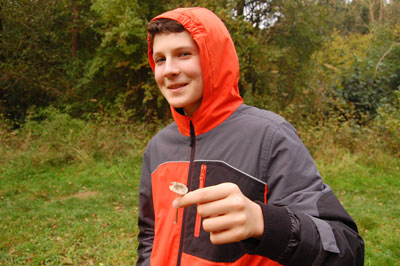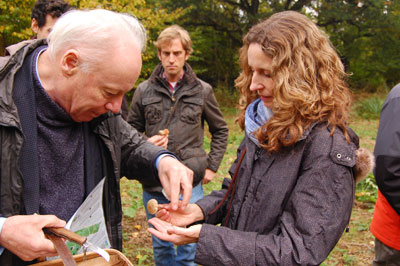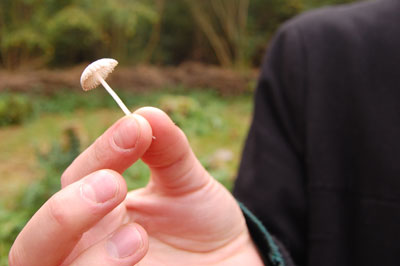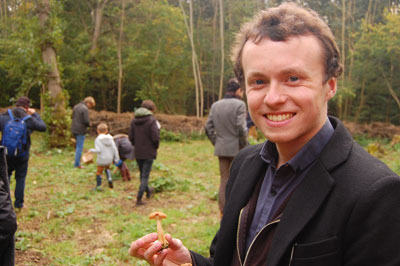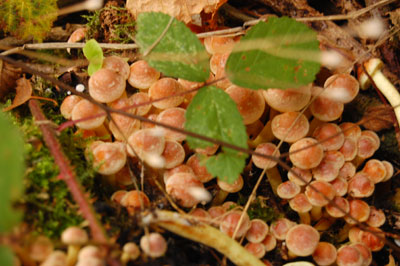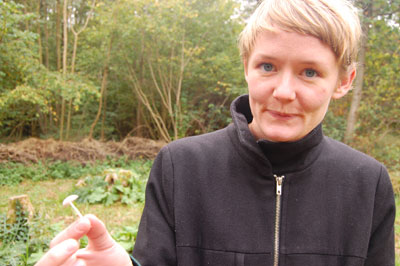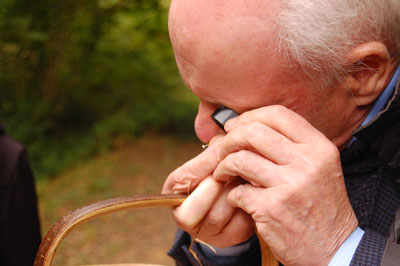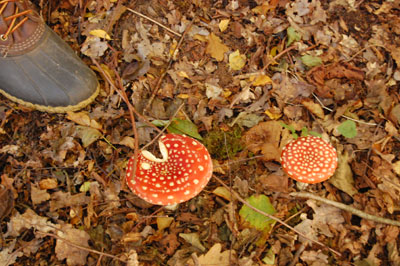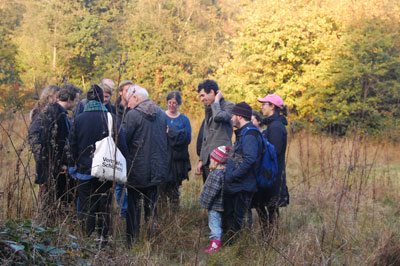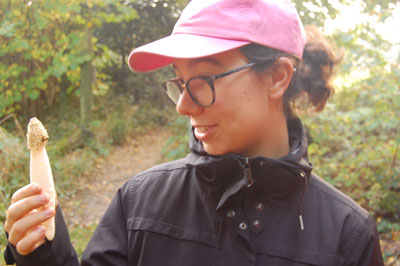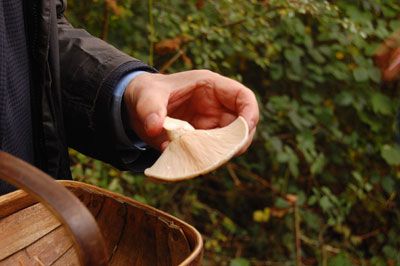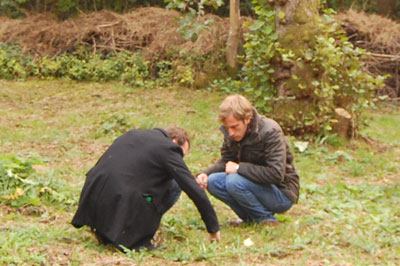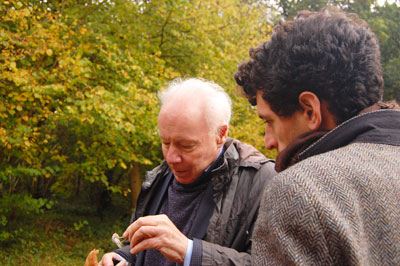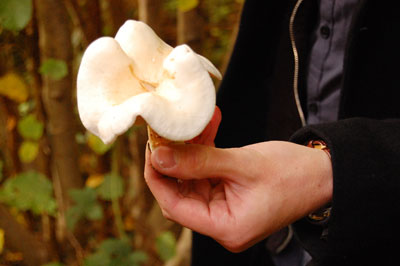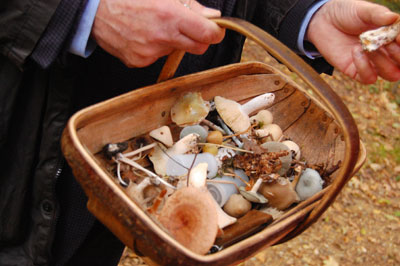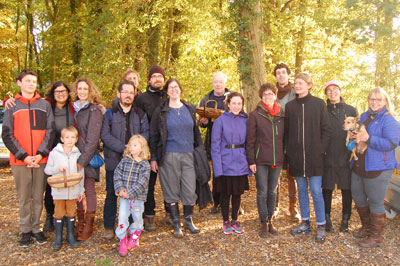Nick Jardine reports on the 2016 Cabinet of Natural History Fungus Hunt, which was held in Bradfield Woods on 24 October. Photos by Charissa Varma.
This was the 26th HPS Annual Fungus Hunt – they started in 1989, but were twice cancelled, once due to weather too bad for humans, once when it was too good for fungi.
The expedition was well attended and successful. Our thanks to the Suffolk Wildlife Trust for permission to explore this nature reserve and to collect a few fungi for identification. Thanks also to those who brought cars – miraculously there were just the right number of spaces. And special thanks to the lynx-eyed children who spotted the really interesting small mushrooms, notably one of the tiniest of the gilled fungi, Marasmius setosus, with a hair-like stem and a cap less than 2mm across, found by Simon Spary and Lily Margocsy.
Our most dramatic find, spied by Tamara through a gap in a wattle fence, was a wonderful ring of Fly Agarics with their white-flecked brilliant red caps, and amongst them lots of the unmentionable Stinkhorn aka Phallus impudicus. The latter were eagerly photographed and provoked some 'locker room banter'. Alas, we found only a few good edible mushrooms, though there were lots of a Milkcap, Lactarius controversus, described in Rogers Mushrooms as edible but poor. By grim coincidence we found a couple of nice edibles growing alongside poisonous look-alikes: the lovely blue-green Clitocybe odorata, called Aniseed Funnel because of its smell and taste, surrounded by the at-first-glance similar poisonous blue-green Stropharia cyanea, and the delicious Miller, Clitopilus prunulus, mimicked by the deadly Clitocybe phyllophila.
In Hewitt's Meadow, in the heart of the woodland, we found masses of Psilocybe semilanceata, variously called Liberty Cap, on account of its shape, and Magic Mushroom, in virtue of its psychedelic effects – we wondered if the black sheep busily cropping them were having a really good time.
A couple of fairly rare fungi were abundant, the beautiful pink-capped Russula luteotacta, poisonous but looking like other edible Brittlegills, and Psathyrella multipedata, the Clustered Brittlestem. As for ones not found on previous visits to Bradfield Woods, there were a couple of uncommon species: Cortinarius hinnuleus, called on account of its strong smell Earthy Webcap, and a small Pinkgill, Entoloma farinolens, smelling of damp flour as implied by its specific name.
